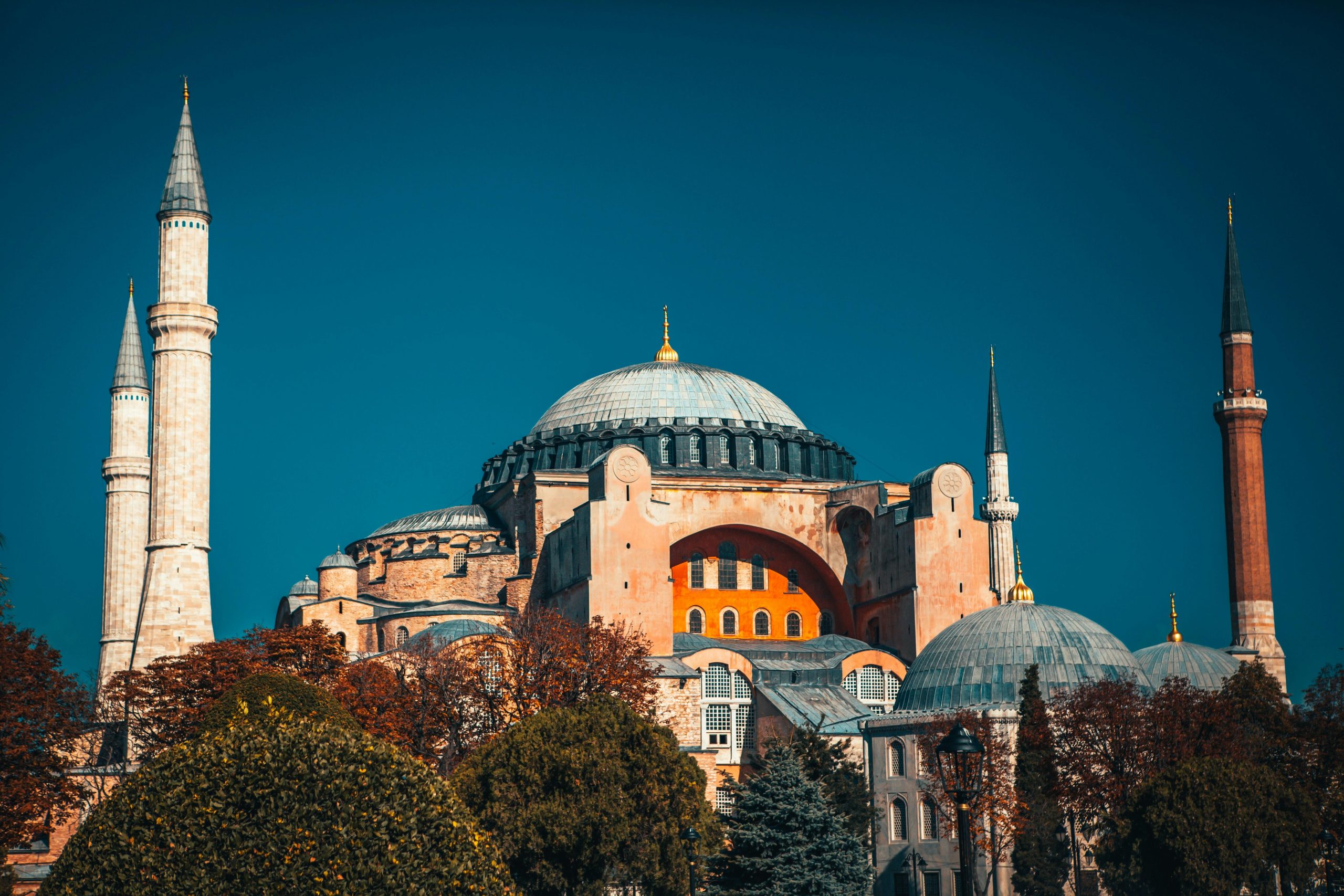Ten Fun Facts About the Hagia Sophia

The Hagia Sophia Grand Mosque in Istanbul is one of the most remarkable buildings in the world. It was completed in 537 CE during the reign of Byzantine emperor Justinian I. Originally built as a Christian cathedral, it has undergone multiple “rebrands” over the centuries: it became a mosque after the Ottoman conquest, then a museum in the twentieth century, and later returned to mosque status. Its long and varied history, combined with astonishing architecture, makes it a perfect subject for some fascinating and unexpected trivia.
1. The dome is an optical illusion
The dome of the Hagia Sophia was designed so light pours in around its base, making it look like it’s floating. This intentional trick makes it seem weightless.
2. It has survived more than its fair share of earthquakes
Despite being built in the 6th century CE, the Hagia Sophia has been repeatedly shaken by earthquakes, damaged, patched up, reinforced, and is still standing.
3. Crusaders once looted it
During the Fourth Crusade in 1204 CE, Christian crusaders stormed the church, stole relics, and desecrated it (even though it was a Christian holy site).
4. It was ground zero for the Iconoclasm Debates
The building was a battleground in the fight over whether religious images were holy or sinful. During the 8th and 9th centuries CE, some of the Hagia Sophia's beautiful mosaics were destroyed, then later uncovered, then covered again! Over the centuries that followed, many restoration efforts were carried out to protect the Hagia Sophia’s structure and maintain its historical importance.
5. It’s been a church, mosque, museum… and mosque again
Very few buildings on Earth have changed religious and political identity this many times. Each conversion left physical marks still visible today, such as minarets, mosaics, and calligraphy all in one space.
6. The first conference centre?
The Hagia Sophia wasn’t just a place of worship. It hosted huge imperial ceremonies and church councils with massive crowds, making it one of the largest gathering spaces of the ancient world.
7. It inspires science
Architects and scientists still study the Hagia Sophia today—not just for design, but also for its acoustics, earthquake resistance, and experimental building methods used 1,500 years ago.
8. History is layered on the walls
Hagia Sophia acts like a time capsule you can walk through. Inside, you can see artwork and decorations from different eras still sitting side by side, such as ancient Christian mosaics peeking out beneath later Ottoman designs or calligraphy panels. Instead of replacing the past, each generation added to it, so the building shows a visual record of history stacked layer by layer.
9. Graffiti gives the Hagia Sophia a “museum guest book” vibe
Across time, people have left inscriptions all over the building. Some act like medieval graffiti, recording who visited, what they saw, or what was going on at the time.
10. The Hagia Sophia is still causing arguments today
Its status (museum vs. mosque) continues to spark political and religious debate worldwide...1,500 years after it was built! Very few monuments are still this politically active.
